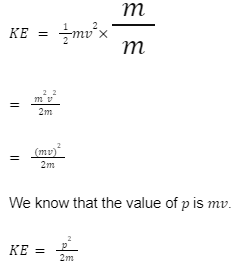We use the word momentum every day in our lives. You must have read about it in your science class or in fictional books and newspapers. But, what does linear momentum actually mean and why is it so important? If you also have these questions then you have landed on the right page. Keep reading this article to find answers to all your queries.
What is Linear Momentum?
In about 530 AD, philosopher John Philoponus developed the concept of momentum in his commentary on Aristotle’s Physics. According to Newton mechanics, linear momentum or simply momentum can be defined as the product of the mass(m) and velocity(v) of an object. It is a vector quantity which means that it takes both the magnitude and direction into consideration.
Now, let’s understand what velocity is? In simple words, velocity tells the speed of any object in a particular direction. As you can see, velocity is also a vector quantity. You must remember that the momentum of any object will always be in the same direction as its velocity.
Linear Momentum helps to judge how hard it would be to stop a particular object. Let’s understand the concept of linear momentum with a simple example. If you throw a small ball and a big ball towards your friend at the same speed, which ball do you think will hit harder? Obviously, the big ball will be hit harder since it has a bigger mass. So, when the mass of an object is greater then the momentum will also be high.
In quantum mechanics, linear momentum can be defined as a self-adjoint operator on the wave function. Both the position and momentum are conjugate variables in quantum mechanics.
Formula of Linear Momentum
The formula for Linear Momentum can be given as follows:
p=mv
Where,
p = momentum
m = mass
v = velocity
The SI unit of momentum is kgm/s. As you can see if you increase the value of one of the variables which are there on the right side of the equation i.e mass and velocity then the momentum will also increase. If you increase both the mass and velocity then the momentum goes even higher. Do you remember Newton’s First Law of Motion? It states that if an object is moving at a straight line, it will continue moving unless it is interfered with by another object or force.
The same principle applies to momentum as well. The value of momentum will remain constant if the value of both mass and velocity remains constant. For any object to have momentum it must be moving.
Relation Between Momentum and Kinetic Energy
Many people have a lot of confusion regarding the relationship between kinetic energy and momentum. Understanding their relationship is very important from the point of view of physics. Before we define their relationship let’s understand what exactly kinetic energy is.
Kinetic energy is the energy that an object possesses because of its motion. If we want any object to have acceleration then we must apply force. To apply force we need to work. Once the work has been done the energy that we got from doing the work will be transferred to the object. The object will now be moving at a new speed. This transfer of energy is known as kinetic energy. It is a scalar quantity. This means that it does not have direction.
Formula of Kinetic Energy

Where,
KE is the kinetic energy
m is the mass of the object
v is the velocity of the object
The SI unit of kinetic energy is the joule.
Now, let’s understand the relation between kinetic energy and momentum. We can derive their relationship mathematically like this:

Multiply and divide RHS by m

The above equation helps us to understand the relationship between kinetic energy and momentum of the object which is under motion:
If Momentum is constant | KE ∝ 1/m |
If Kinetic Energy is constant | p √m |
If mass is constant | p ∝ √KE |
Conclusion
Linear momentum is not very difficult to understand. You need to remember that linear momentum is directly related to the mass and velocity of the product. You can see the linear momentum formula which is given above to understand this. The laws given by Newton also impact momentum to a certain degree.
Most importantly, it is a vector quantity so, it considers direction and magnitude. To understand momentum better you need to understand the concept of velocity. Keep in mind that the value of momentum will remain constant if the value of both mass and velocity remains constant.
 Profile
Profile Settings
Settings Refer your friends
Refer your friends Sign out
Sign out






